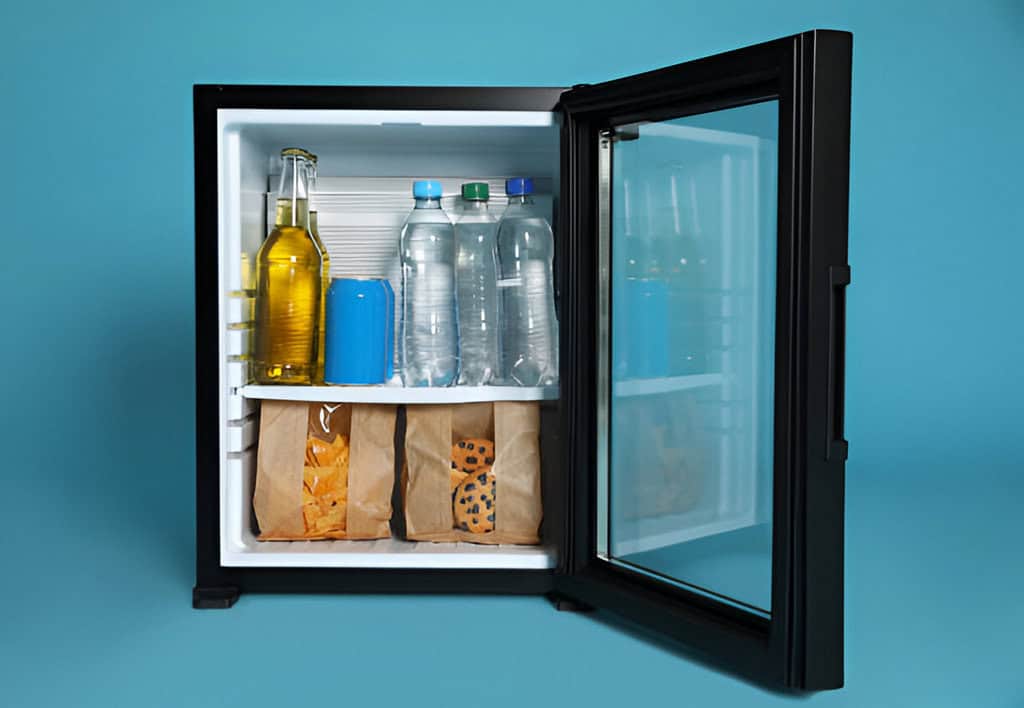Mini Fridge Energy Costs: How Much Will It Add to Your Electric Bill?
I thought a mini fridge would just add convenience. I’d have a place to keep my snacks and drinks cold, without trekking to the kitchen. But soon, a nagging question popped into my head: How much is this little convenience going to cost me? After all, every appliance that plugs into the wall eventually adds a bit of weight to your electric bill.
Being energy efficient is important. But, many appliances in most American homes make it hard to have a smaller carbon footprint than your neighbors.
Mini fridges run off of standard 110V outlets, but how much power do they actually draw, and what does it all mean?
Mini fridge power usage is just like your standard refrigerator – always running, always drawing power. It’s not like your phone or laptop, which lock automatically and cut battery usage in half.
We’re going to go over some energy ratings and compare a mini fridge to a standard fridge.
How Many Amps Does a Mini Fridge Use?

Assuming your mini fridge runs on a 110V outlet (not a dedicated circuit) and uses 80 watts, it uses about 0.7 amps.
However, this isn’t going to measure your electric bill the same way. For that, the utility companies use kilowatts per hour. So, during a purchase, check the wattage. That’s the benchmark.
Mini fridges run on 110V/120V wall outlet plugs, while many residential refrigerators run on a dedicated 220V. The higher the voltage, the more dangerous it is, and thus requires a dedicated circuit, unlike the outlets all throughout your home.
Mini fridges are popular for dorms, apartments, and even RVs because they use less power in general. A 21-cubic-foot, fully-loaded residential fridge runs on a 250-watt, 220V connection. It draws about 1.13 amps of power.
The disparity from 7.0 to 1.13 doesn’t sound big, but it is. That’s about three times the wattage (and therefore three times the cost) of a mini fridge.
Energy Consumption: Mini Fridge Vs. Regular Fridges
Assuming your mini fridge runs on a 110V outlet (not a dedicated circuit) and uses 80 watts, it uses about 0.7 amps.
However, this isn’t going to measure your electric bill the same way. For that, the utility companies use kilowatts per hour. So, during a purchase, check the wattage. That’s the benchmark.
Mini fridges run on 110V/120V wall outlet plugs, while many residential refrigerators run on a dedicated 220V. The higher the voltage, the more dangerous it is, and thus requires a dedicated circuit, unlike the outlets all throughout your home.
Mini fridges are popular for dorms, apartments, and even RVs because they use less power in general. A 21-cubic-foot, fully-loaded residential fridge runs on a 250-watt, 220V connection. It draws about 1.13 amps of power.
The disparity from 7.0 to 1.13 doesn’t sound big, but it is. That’s about three times the wattage (and therefore three times the cost) of a mini fridge.
Energy Consumption: Mini Fridge Vs. Regular Fridges
If you live alone or rarely use your fridge, switch to a mini fridge. The cost savings will be worth it.
An average residential fridge has about 19 cubic feet of space. It varies by model, but it’s usually between 15 and 25. That takes a lot of power to keep it running.
If you pay attention to your electric bill, you’ll see that you have kwh, or kilowatt hours, which is how your utility bill is measured. The more watts you use (or that an appliance uses), the more kilowatt hours you will use in any given month or billing cycle period.
Typically, a mini fridge uses about 80 to 100 watts to keep running. Many full-size refrigerators, depending on their energy efficiency rating and overall size, can run as low as 100 watts but as high as about 250 watts. In short, you run the potential of running up 2.5x more of a bil with a full-sized refrigerator.
The Cost Breakdown: What Does It Mean for Your Wallet?
Now, let’s talk numbers—because, at the end of the day, that’s what really matters, right? I did the math (don’t worry, it’s not as scary as it sounds), and here’s what I found. The average cost of electricity in the U.S. hovers around 12 cents per kWh. If your mini fridge uses, say, 200 kWh per year, you’re looking at an annual cost of around $24. Not bad, right?
But let’s dig a little deeper. In states with high electricity rates, like California, a fridge could cost you $40 per year. Rates there can be as high as 20 cents per kWh. It’s not exactly going to break the bank, but it’s definitely something to keep in mind if you’re watching every penny. Here’s a quick table that lays out the potential costs based on different electricity rates:
| Electricity Rate (cents per kWh) | Annual Energy Use (kWh) | Annual Cost ($) |
| 10 | 200 | 20 |
| 12 | 200 | 24 |
| 15 | 200 | 30 |
| 20 | 200 | 40 |
| 12 | 300 | 36 |
| 15 | 300 | 45 |
As you can see, the cost can creep up depending on where you live and how much your mini fridge is chugging along with. It’s a reminder that, just like in life, the little things do add up over time.
Practical Tips for Minimizing Energy Use of a Mini Fridge
To minimize the energy use of your mini fridge, start with proper placement and ventilation. Position your mini fridge in a cool, shaded area away from direct sunlight and heat sources like ovens or radiators. Make sure there is enough space around the unit for air to circulate. This helps the compressor work efficiently and reduces energy use.
Keeping your mini fridge stocked can also make a difference in energy usage. A well-stocked fridge retains cold air better than an empty one, reducing the need for the compressor to kick in frequently. However, avoid overloading it, as this can restrict airflow and force the fridge to work harder.
Adopting smart habits is another effective way to reduce power usage. Clean the coils regularly to maintain efficiency. Set the thermostat to the recommended temperature. Avoid leaving the door open for long.






